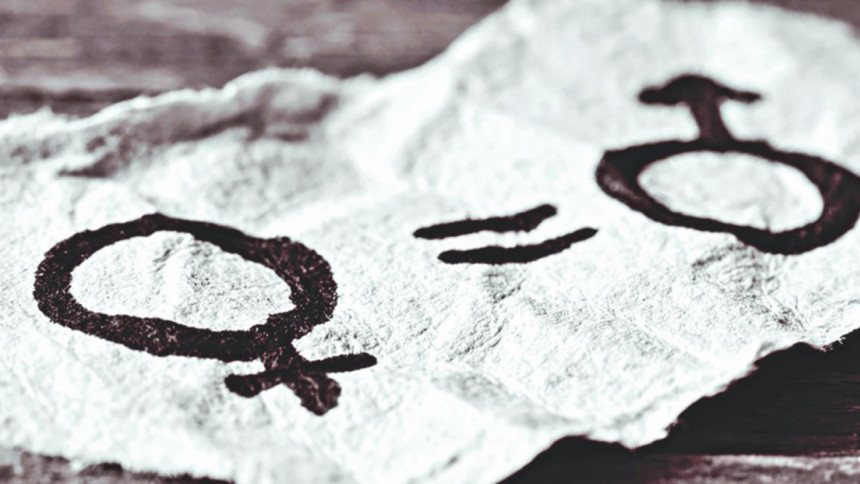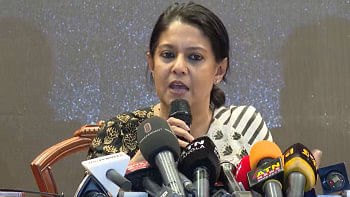Closing the gap

Reduction of gender inequality is a goal embraced by nations across the globe. One of the goals of the UN Sustainable Development programme is gender equality (number 5) and Bangladesh government has committed its energy and resources to achieving it. However, the recent Global Gender Gap Report published by World Economic Forum (WEF) indicates that while Bangladesh has moved up in global ranking from 72 to 47 among the 144 countries surveyed, the country along with many others has reverted back in the most important dimension, i.e., economics.
In the decade since 2006, when WEF started collecting and publishing data on gender disparity, there has been considerable progress in our collective efforts to move towards gender equality, but the latest report indicates that there was a slight but discernible setback in 2017. The gap in health, education, politics and economics "widened for the first time since records began in 2006." Karl Schwab, Founder and Executive Director of WEF added that, "Overcoming the biases—unseen or otherwise—that are keeping us from closing the gender gap represents an overwhelming economic as well as moral imperative."
The gap in income, wages, and job opportunities between men and women in a developing country like Bangladesh is pervasive and entrenched. Statistics collected by BBS and various surveys, as well as various studies and newspaper accounts, indicate that women face discrimination in the workplace, and have limited access to healthcare, education, politics and technology to name a few areas. As any practitioner of development policy will testify, elimination of gender inequality presents a formidable challenge and inter-country comparisons provide a very clear picture of the difficulties, as well as favourable factors.
Some of the most challenging gender gaps remain in the economic sphere. At the current rate of change, and given the continued widening of the economic gender gap already observed last year, it will now not be closed for another 217 years. This year, the economic gender gap has reverted back to where it stood in 2008, after a peak in 2013. An alarming dimension of this failure is, of the 1.6 billion people who live in extreme poverty, the majority are women. For Bangladesh, despite increased globalisation and the inroads made by the market economy, job opportunities for women have remained very limited and often restricted to a few sectors. Research studies indicate that women in professional positions are still struggling to find the higher paying jobs that men have access to more easily, and find gender-bias as prevalent as they were decades ago. "Discrimination, workplace harassment, high dropout rate and glass ceiling are factors causing corporate environment unfavourable for women," according to a study done by Professor Jashim Ahmed of NSU and others.
In this context, SDG-5 seeks to achieve gender equality and empower all women and girls by 2030. The policy actions taken up by individual countries and the UN seek to redress the gaps between men and women in terms of poverty, labour markets and wages, and participation in private and public decision-making. Other areas of intervention include violence against women and girls, inheritance laws, ownership and control of property, mechanisms to "enforce and monitor" the gender-neutral implementation of legal frameworks for each area of law.
In Bangladesh, the government and the cabinet have undertaken to monitor our progress in reaching the SDGs. Our success will depend on our ability to track and assess the various indicators and metrics for these goals. In "Data Gap Analysis of SDGs", a self-assessment published last year, the government has identified serious shortcomings in our data collections efforts in 6 out of 14 indicators to measure gender inequality. In two areas, currently there is no data. These are, indicator 5.3.2 "Eliminate all harmful practices, such as child, early and forced marriage and female genital mutilation" and Indicator 5.a.1 "(a) Proportion of total agricultural population with ownership or secure rights over agricultural land, by sex; and (b) share of women among owners or rights bearers of agricultural land, type of tenure."
The study, undertaken by the Planning Commission, also indicates serious gaps in data collection efforts on underage marriage, proportion of women in managerial positions, system to track our legal framework to guarantee women equal right to land ownership, public allocation for gender equality and women's empowerment. One can hope that various ministries and departments of the government will be entrusted to gear up for data collection.
Finally, while the SDG Data Gap study indicates that our data collection effort is robust in 8 of the 14 indicators of gender equality, doubts persist about the statistical system and data accuracy. For example, Indicator 5.1.1 measures whether or not 1) national laws exist to promote gender equality and non-discrimination against women and girls and 2) there exist mechanisms to "enforce and monitor" the implementation of legal frameworks for each area of law. Indicator 5.2.1 considers the proportion of ever-partnered women and girls aged 15 years and older subjected to physical, sexual or psychological violence by a current or former intimate partner in the previous 12 months, by form of violence and by age. Studies published by the UN show, in the majority of countries with available data, less than 40 percent of the women who experience violence seek help of any sort. Among women who do, most look to family and friends and very few looks to formal institutions and mechanisms, such as police and health services. Less than 10 percent of those women seeking help for experience of violence sought help by appealing to the police.
The implication of the above finding provides a cautionary tale. "Although administrative data from health, police, courts, justice and social services, among other services used by survivors of violence, can provide information on violence against women and girls, these do not produce prevalence data, but rather incidence data or number of cases received in/reported to these services. We know that many abused women do not report violence and those who do, tend to be only the most serious cases. Therefore, administrative data should not be used as a data source for this indicator," advises the UN Statistics Division.
Dr Abdullah Shibli is an economist and Senior Research Fellow at International Sustainable Development Institute (ISDI), a think-tank based in Boston, USA.






Comments